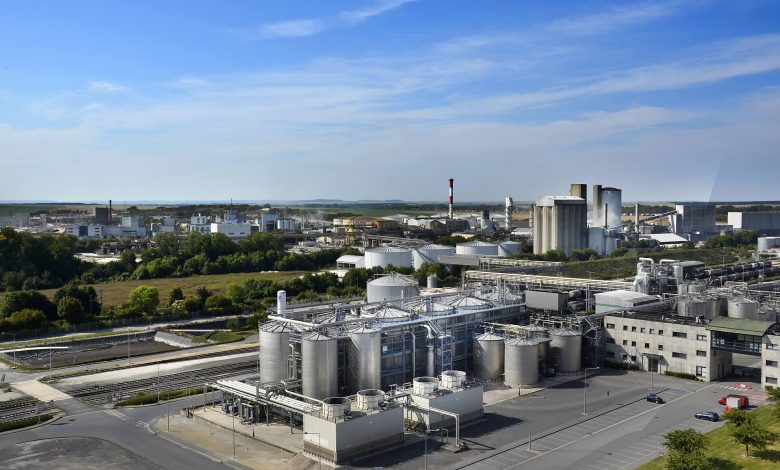What is Bioethanol?

Bioethanol is currently considered a potential substitute for conventional gasoline, especially since it has superior properties that reduce GHG emissions and increase fuel reserves. Commercially used bioethanol is usually produced from edible raw materials such as corn and sugar cane, which increases the cost of production. The high cost of these raw materials is the driving force behind the search for second and third generation (3G) bioethanol, which is cheaper and produced from existing raw materials.
A fourth generation bioethanol is being developed to further advance 3G bioethanol to increase the CO2 capture potential of algae and increase the production of specific compounds. Despite efforts to reduce the production cost by using various non-edible raw materials, the cost of processing the raw materials is still too high, so bioethanol cannot compete with conventional gasoline.
Life cycle assessment and techno-economic analyzes are often performed to assess the economic feasibility and environmental impact of bioethanol production processes. Thus, it is a process that encompasses the latest processes involved in bioethanol production, including pretreatment, hydrolysis, fermentation processes, bioethanol recovery, integrated processes, Life cycle assessment, techno-economic analysis, exergy analysis and process simulation.
General Information About Bioethanol
Global warming caused by fossil fuel depletion and the emission of greenhouse gases from fossil combustion is currently driving researchers towards finding alternative and environmentally friendly fuels. Biofuels are one of the numerous options being considered. Bioethanol is considered the most promising biofuel to replace gasoline, especially because of its properties. This biofuel is a liquid oxygenated fuel containing 35% oxygen produced from microbial fermentation of monomeric sugar from carbohydrate sources such as corn, soybeans and sugar cane.
Bioethanol produced globally in 2018 was 110 billion liters and is expected to increase to 140 billion liters in 2022 with a 7.6% compound annual growth rate (CAGR) due to the economic feasibility of the process. The USA, Brazil, European Union, China and Canada are global powerhouses in bioethanol production, respectively. The USA uses corn as a raw material to produce bioethanol and has a production capacity of ~57.7 billion liters, while Brazil produces bioethanol from sugarcane and had a total production capacity of ~27.6 billion liters in 2016, respectively.
Bioethanol is considered a potential substitute for conventional gasoline and can be used directly in vehicles or mixed with gasoline, reducing greenhouse gas emissions and gasoline consumption. For direct application (E100), the petrol engine’s timing (and electronic control system if used) is adjusted and the larger petrol tank is used. However, the use of bioethanol (E100) is often characterized by difficulty in starting the engine at low temperature or in cold weather due to the high heat of evaporation.
Mixing bioethanol with gasoline may not require engine replacement but will instead help improve ignition or engine performance. The most commonly used blends are E85 and E10. The advantages of bioethanol include increased engine efficiency and performance, low boiling point, broad flammability, higher compression ratio and heat of vaporization, comparable energy content, lower combustion time and higher octane rating resulting in a leaner engine.
Disadvantages include high raw material cost, high production cost from enzymes, detoxification and ethanol recovery, respectively. Bioethanol has a low volumetric energy density, which means more bioethanol/km (up to 50%) will be consumed compared to conventional gasoline. The use of bioethanol in engines may require frequent replacement of engine parts, as bioethanol has the capacity to break down some elastomers and cause corrosion to metals. However, in an attempt to reduce the cost of production, lignocellulosic biomass is accepted as a raw material due to its availability and low purchasing cost. Unfortunately, the transaction cost is still high, thus not making the transaction economically attractive.
When bioethanol is produced from edible raw materials such as corn and sugar cane, it is called first generation (1G) bioethanol and if the raw material is lignocellulose, it is called 2G second generation (2G) bioethanol. Examples of this lignocellulose biomass are cutgrass, corn straw, wood, herbaceous products, waste paper and paper products, agricultural and forestry residues, pulp and paper mill waste, municipal solid waste, and food industry waste.
Lignocellulosic biomass consists of cellulose, hemicellulose, lignin, protein, ash and minor extractive. Lignocellulosic biomass is recognized as a raw material for bioethanol production due to its relatively low purchasing cost, availability and sustainability of supply. This biomass has the capacity to increase the current bioethanol production rate and is estimated to produce approximately 442 billion liters of bioethanol annually globally. 2G-bioethanol has greater potential to reduce greenhouse gas emissions compared to 1G-bioethanol
Third generation (3G) bioethanol is obtained when algae are used as feedstock. Algae bioethanol is gaining traction, possibly due to its high carbohydrate content and lack of lignin in most algae available. With this type of feedstock, the pretreatment cost is expected to decrease as the complex lignin removal process is eliminated. Numerous researchers have investigated the use of algae as a raw material for bioethanol production. Based on the results obtained, it can be determined that there are algae species with high productivity.





